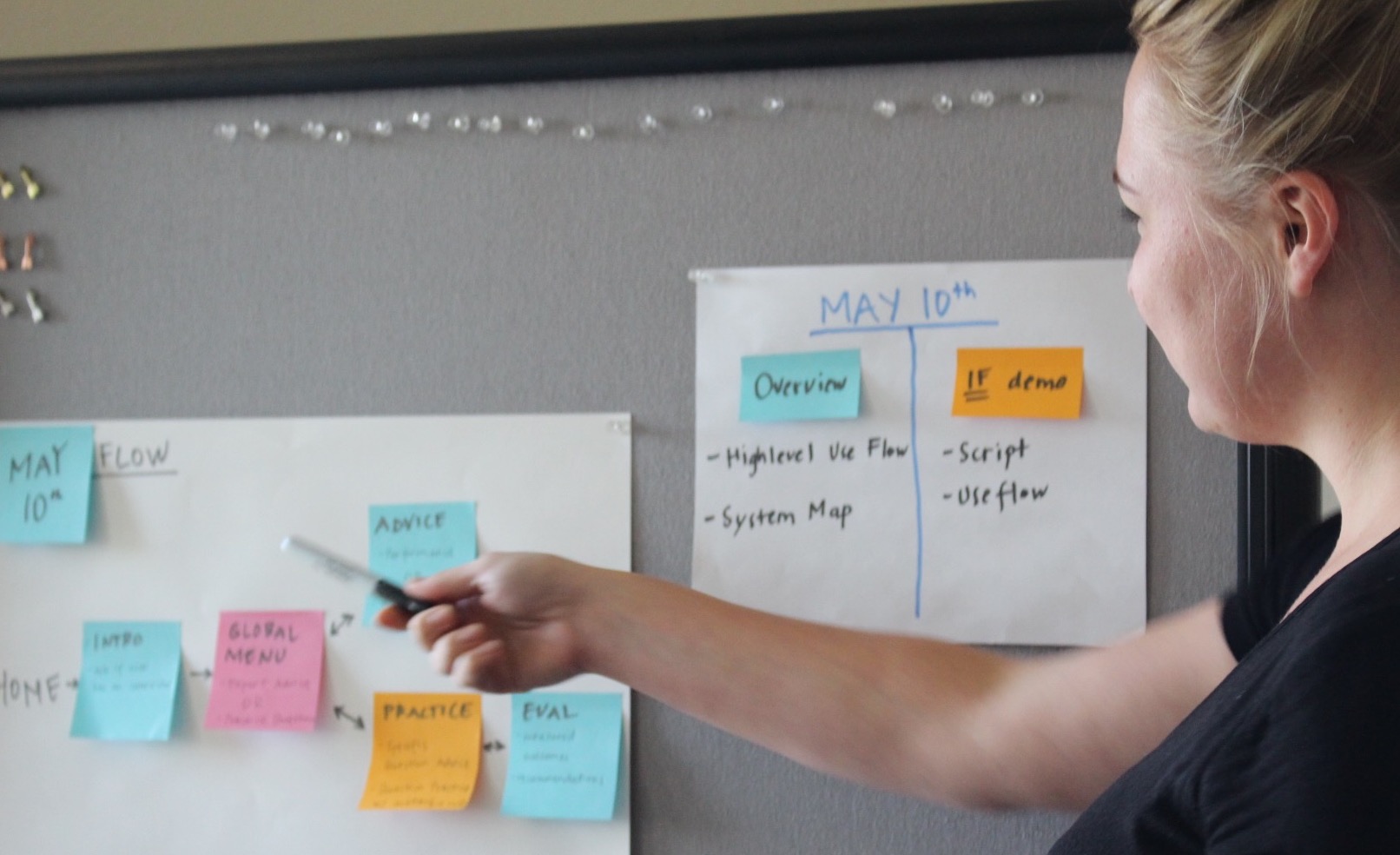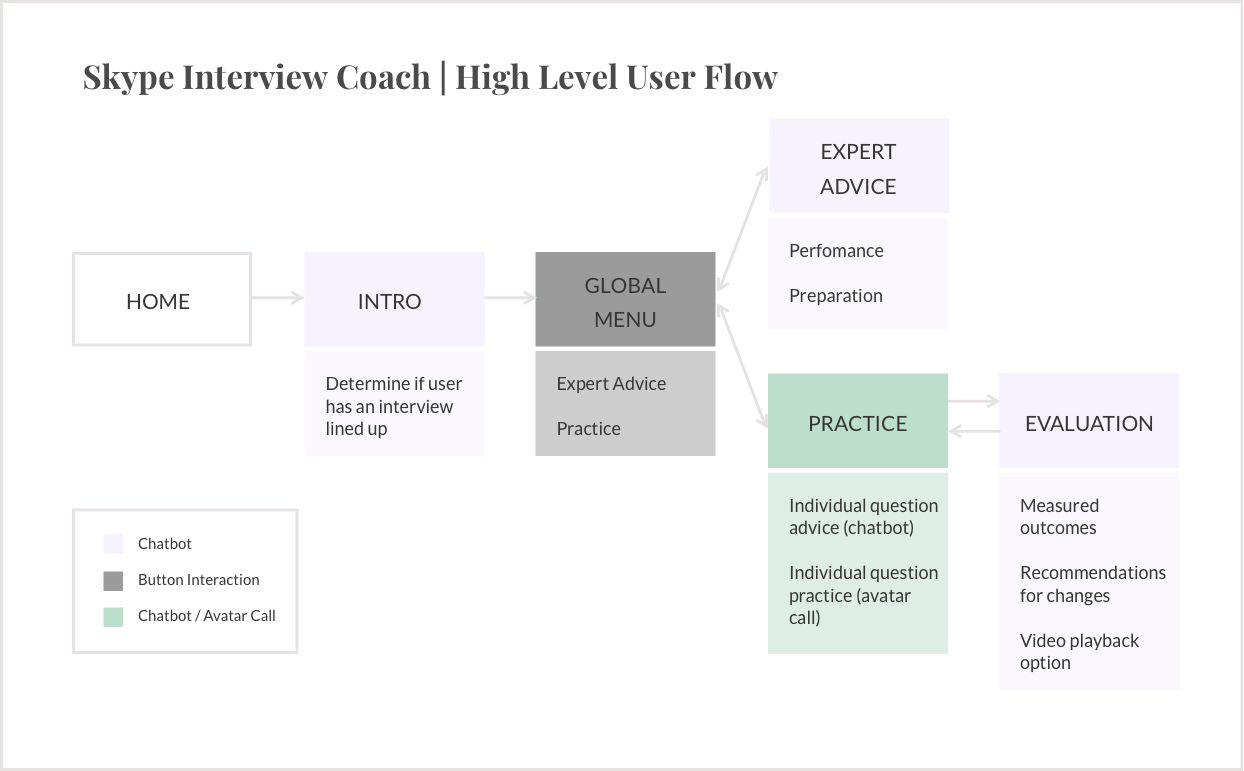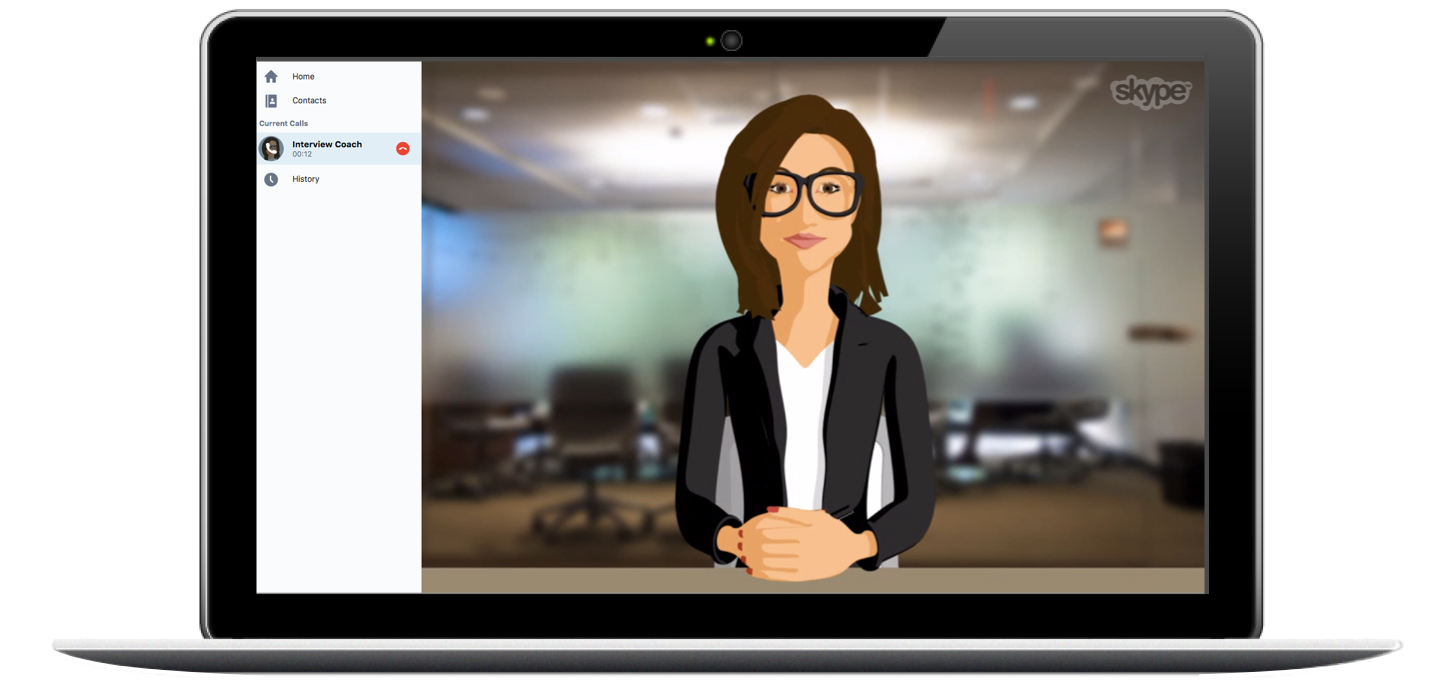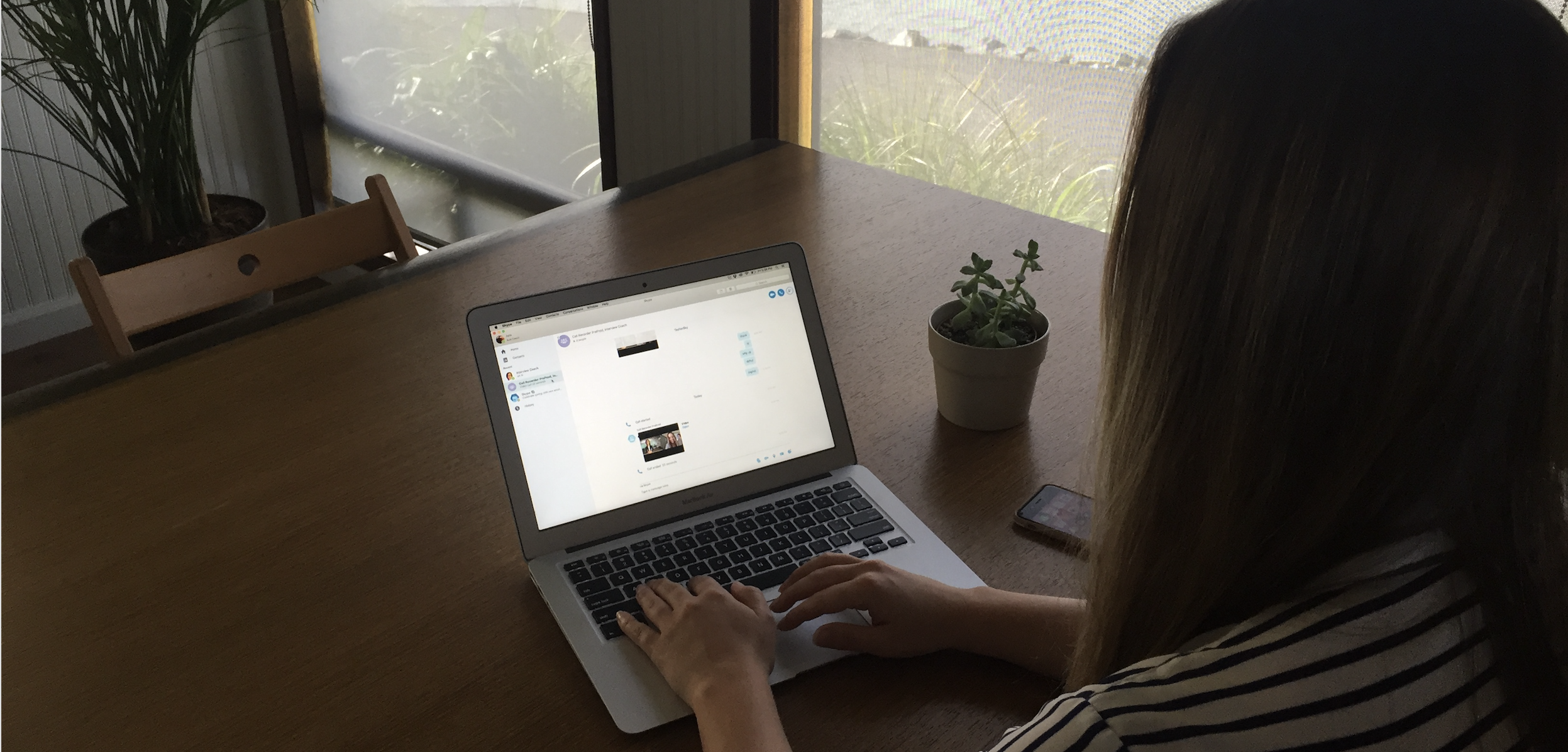Research
We started the process with a round of research to ensure that we were designing the bot with a thorough understanding of the competitive landscape and the users’ needs. For this project, I interviewed:
• Users - those who will potentially benefit from interview practice with the Skype bot.
• Helpers - those who we would model the bot on, people who help others prepare for job interviews.
• Hiring Managers - those whose experience and advice would help inform the content and focus of the bot.
By speaking to these three groups, we intended on learning how to help candidates prepare for job interviews, what their pain points tend to be, and what hiring managers are looking for in an ideal candidate. The insights gathered from the research participants were invaluable for determining the UI direction, the structure of the conversational design, and the bot content.
Strategy

In order to determine the structure of the bot, I worked closely with our PM and content writer to collaborate on user flows, information architecture, and the conversational directions for the bot. I also worked closely with the developers in pinpointing realistic features and capabilities.
“Practice interviewing out loud. Ideally with another person, but just saying it out loud really helps.” (Katie, Hiring Manager)
The high level user flow below was created to communicate with the client on the overall direction for Build. Once approved, it gave us the structure necessary to begin incorporating content and building out more complicated, intricate flows (see examples here). It was also a helpful tool for avoiding feature creep and served frequently as a foundation for re-establishing the alignment on our goals.

Ideation
At this point, I also began brainstorming directions for UI. After discussing the technical capabilities and limitations of the existing Skype UI with our developers, I created wireframes to help illustrate the multimodal nature of the bot.




